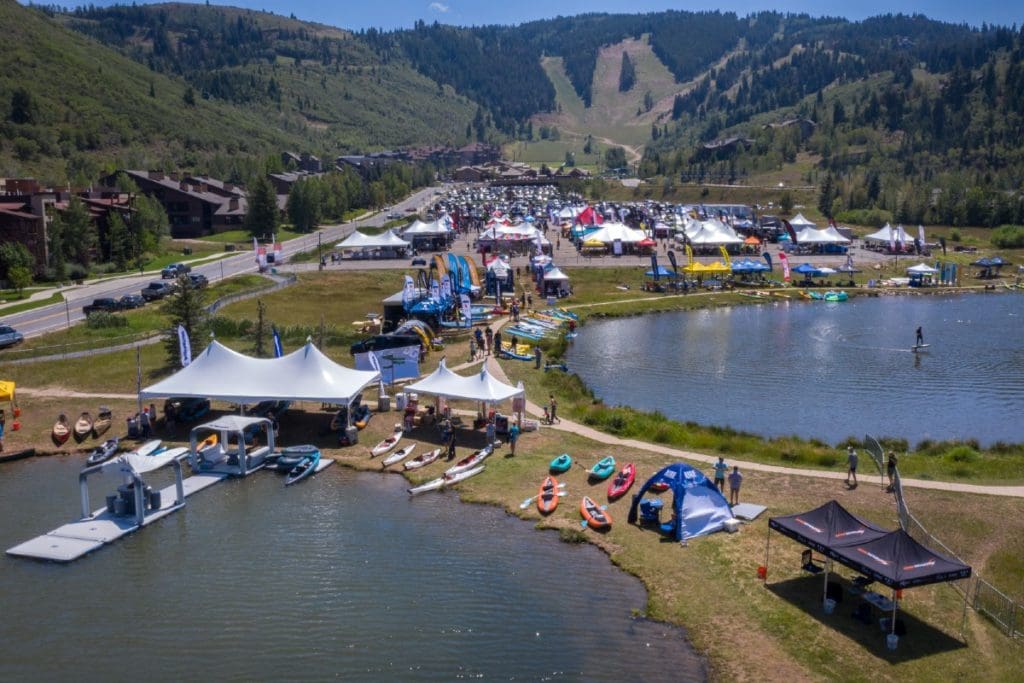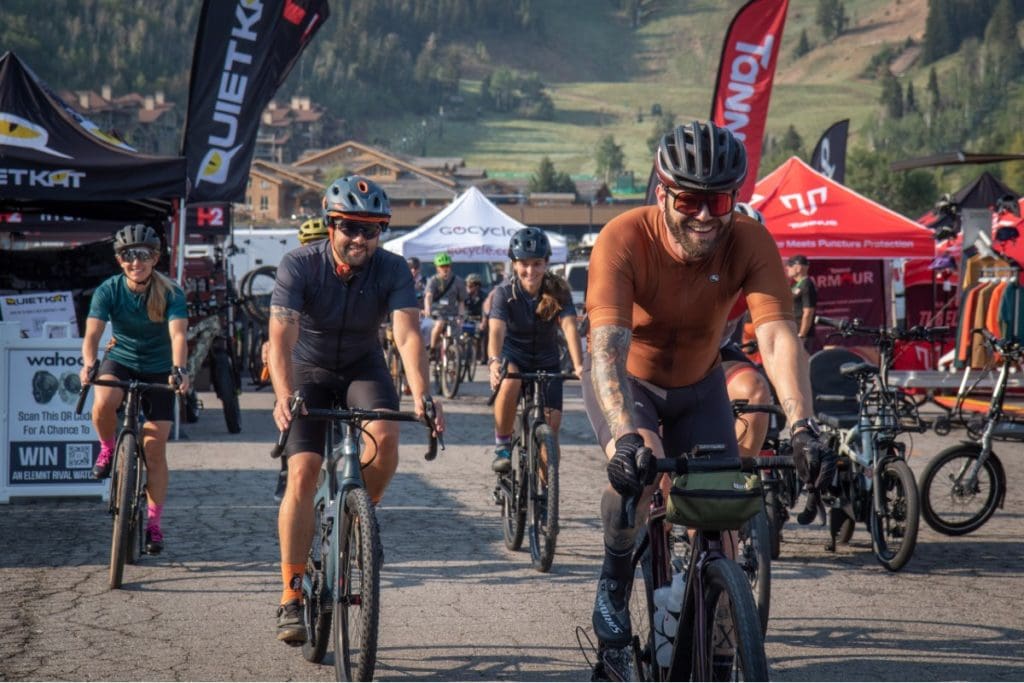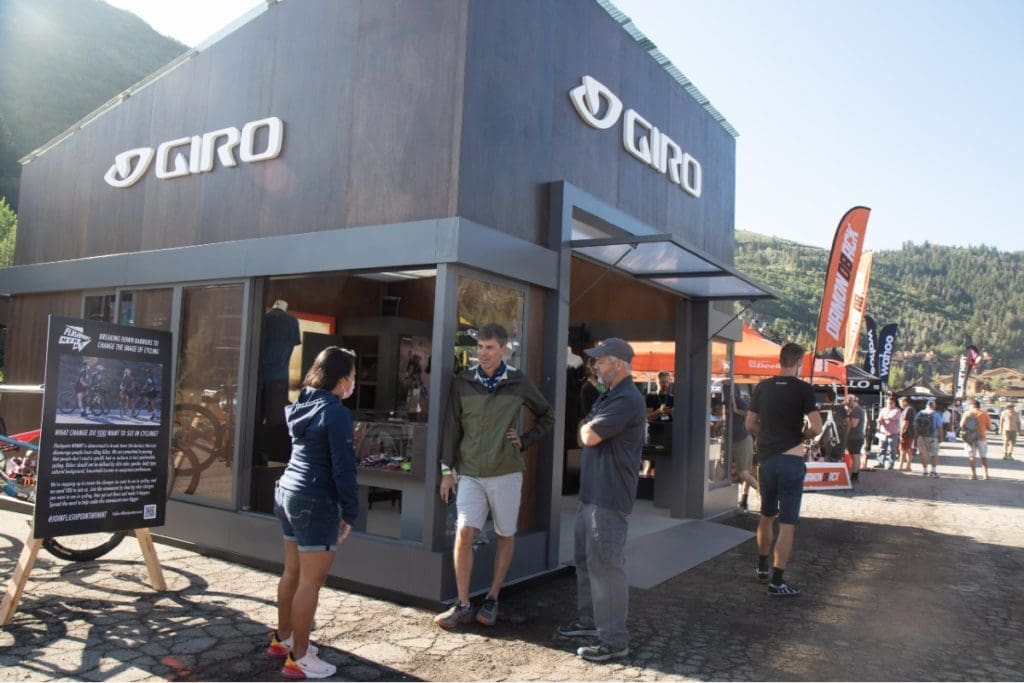Letter From America: Can We See Our Opportunity in the Chaos?

By Marc Sani
Today’s retail environment in the US is in a state of chaos. Planning, forecasting and ordering products—whether bicycles, parts or accessories—have left too many dealers flummoxed over the future of their business.
And, at last, some dealers are starting to question whether the boom in sales, sparked by COVID-19 lockdowns in the spring of 2020, was an unanticipated blip or a signal that booming sales could continue for some years to come. That question, of course, weighs heavily on dealers attempting to plan for next year and on.
Mike Jacoubowsky, first vice chair at the National Bicycle Dealers Association (NBDA) raised that issue in a recent post to Cycling Industry Recovery, an online industry forum. And it was a lively topic of conversation, among others, at the NBDA’s tent at the recently concluded Big Gear Show, a curated trade show held in a parking lot at the base of Deer Valley Resort, near Park City, Utah.
Here’s how Jacoubowsky framed the question, “How many people found bicycling to be a solution to the situation COVID-19 put them in?
“It shows a susceptibility to cycling that we hadn’t recognized.
“What other opportunities might exist with a gentle nudge? Or was COVID-19 some sort of perfect storm that can’t be repeated?”
And now the surging Delta variant is rapidly upending planning and forecasting across every industry in the US, including bicycles.
Frankly, no one knows whether the COVID bike boom will last. There’s a paucity of independent industry research as dealers, distributors and suppliers rely primarily on anecdotal observations and orders currently in the pipeline to make decisions a year or two out. All this is compounded by bicycle suppliers pressuring dealers to place a plethora of orders now with threats—subtle or otherwise—that they will be left holding an empty bag down the line. And on top of that, there is no sense of pricing trends moving forward.
This lack of a coordinated industry effort to get a handle on the marketplace has been a pox on the industry for decades. And now that lack knowledge bodes ill for dealers—especially. As Jacoubowsky pointed out, “I have many questions. No answers.”
Some dealers are working with estimated unit arrivals in excess of 10 months and some brands are citing lead times of up to 18 months for specific models. In one case, a dealer said he has yet to receive bikes from orders placed with Cannondale almost a year ago. Suppliers, of course, are dealing with long lead times at most Asian factories as well as continuing chokepoints at key ports along the West Coast.

While talking with dealers at the Big Gear Show any number of other concerns surfaced. Too many dealers have no idea how bikes are being delegated to individual stores. Most seem to have concluded—rightfully or not—that Trek, Specialized and others are taking care of their best dealers first leaving smaller operators to wait for orders to be filled at some point in time even as Tier 2 suppliers struggle to find manufacturing capacity.
Dealers, again, are convinced that the major suppliers are “buying” capacity at key factories. In other words, placing profitable large-order runs at factories who then bump smaller suppliers down the queue or force them to look elsewhere. Industry consultant, Jay Townley, says reports from his many contacts in Taiwan, back up that concern.
In Trek’s case, dealers are convinced that Trek supplies stores that it owns first as well as others they have some financial control over. Specialized is focusing on stores in key regions where sales are booming as well as with its best dealers. As for e-bike deliveries, no one seems to know much of anything. They come when they come.

One dealer said there appears to be little transparency in delivery times. “And honestly, I’m sceptical that any answer would be 100 percent truthful,” a dealer said. Other issues rankling the dealer network hit closer to home—the immediate bottom line. Among them are new agreements on pre-payments before delivery; 30-day invoicing; new rules on freight discounts; and among Trek and Specialized dealers especially, new minimum dollar purchase requirements for their own branded P&A. It’s not pretty out there.
Stepping back for a moment, there are somewhere between 4,000 and 5,000 retail storefronts in the U.S. and even that’s a disputed figure. (One list manager claims 7,000+.) I tend to circle in on the 4,000+ number of relevant IBDs. Still, it seems, no one knows for sure. And of late some store owners operating a chain of outlets have sold out primarily to Trek as it apparently seeks to out-compete its most formidable rival, Specialized, by dominating a city or region. Specialized, on the other hand, either finances dealers to become heavily weighted Specialized stores, or opens its own outlets to counterbalance Trek.
And now PON Holding (Cervelo, Santa Cruz, Focus, Gazelle, Kalkoff, Urban Arrow and others) has recently leapt in with the purchase of Mike’s Bikes, a 12-store chain in Northern California. Where this trend toward vertical integration of brands and stores goes over the next few years is anyone’s guess.
So chaos, driven by indecision, guesswork and lack of transparency especially among dealers—the industry’s frontline in the battle for consumer loyalty—tends to rule at the moment. What do dealers tell their customers?
The current situation is a shame since, in a macro sense, the bicycle industry should be primed for a new Golden Age. Climate change, e-bikes and urban mobility and how to profit from those trends should be front and centre topics.
It’s not. And that’s too bad.
